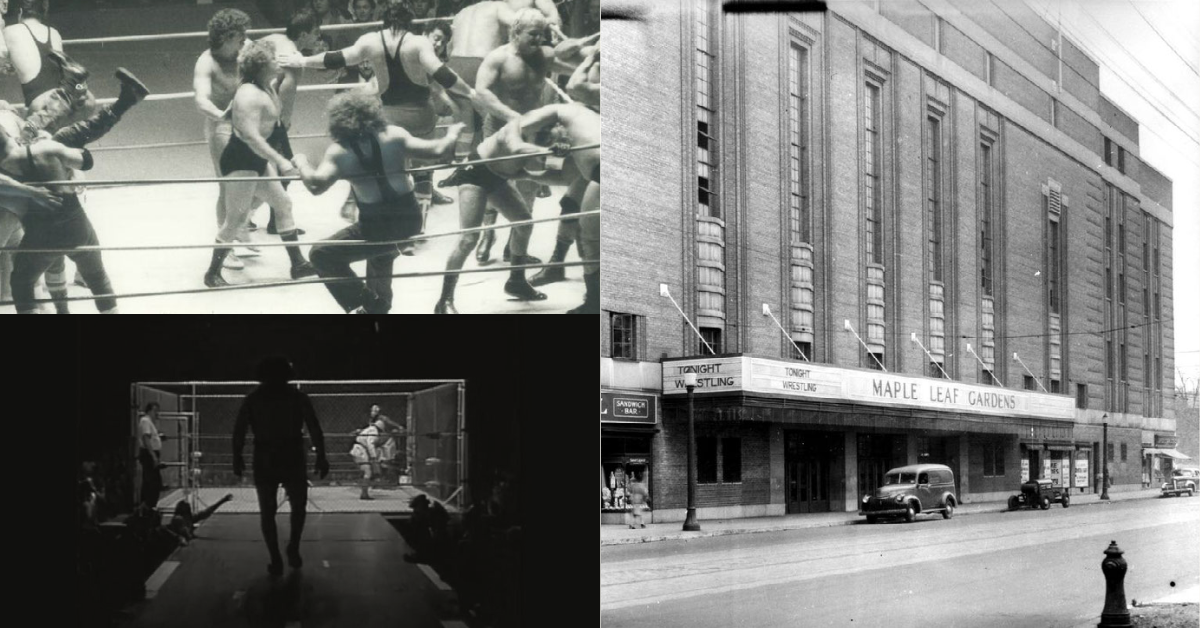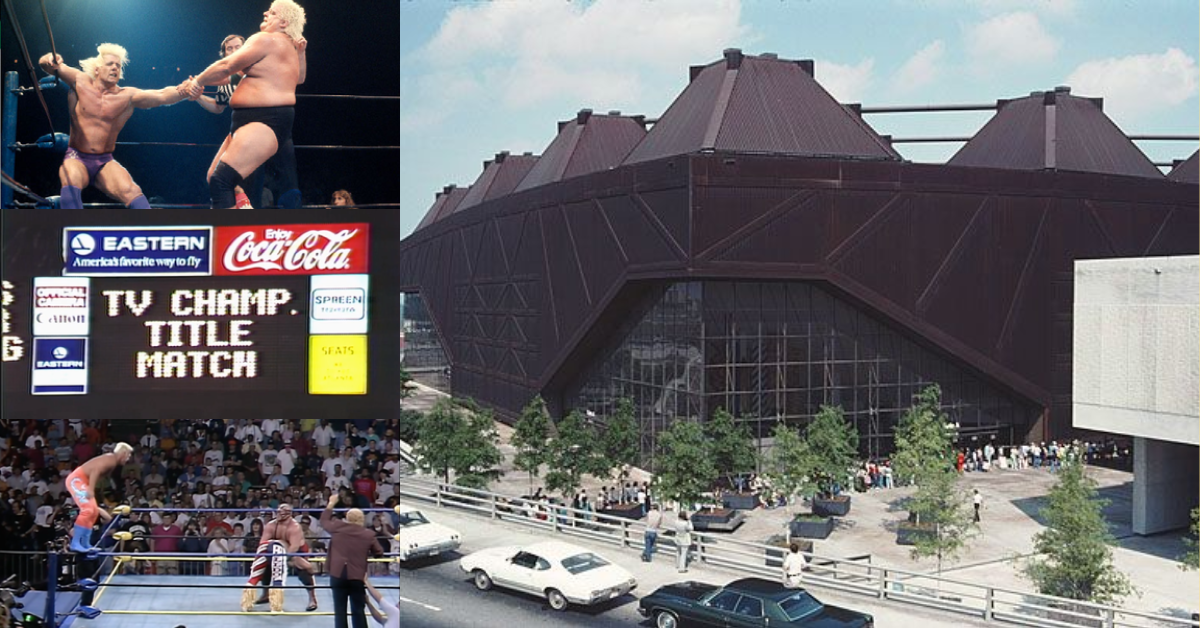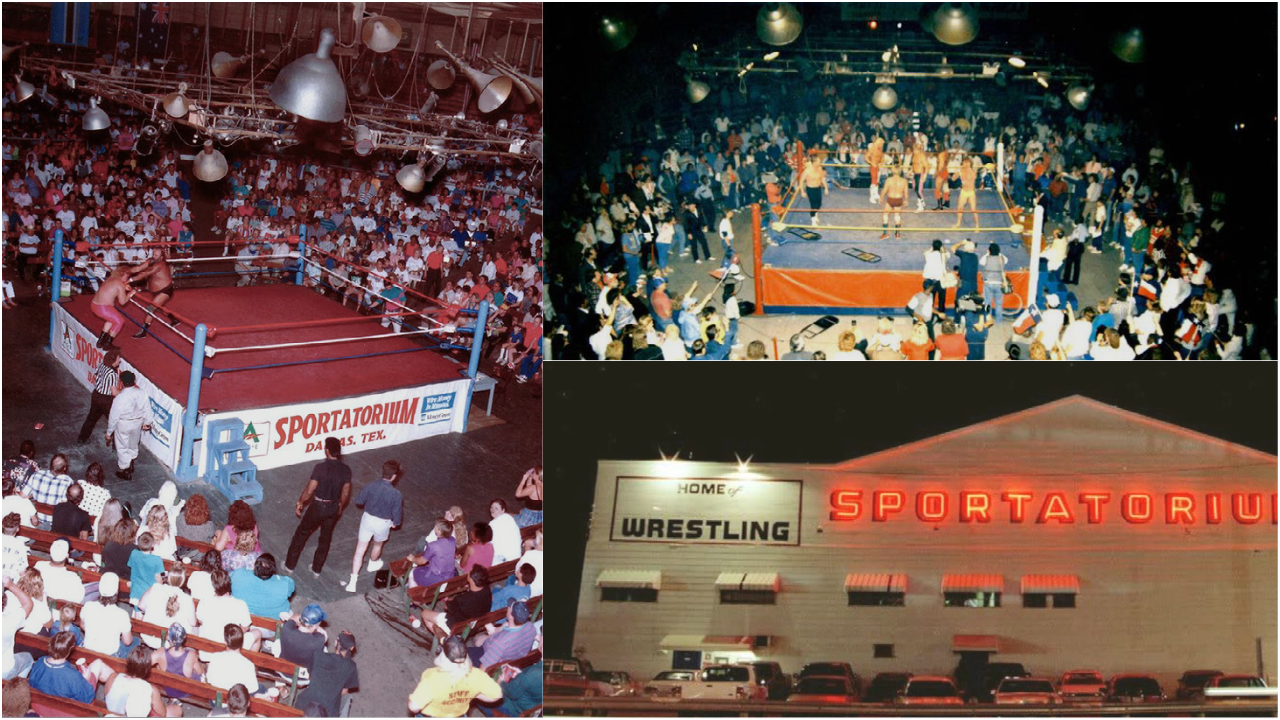Sacred Grounds - The Cow Palace
Throughout professional wrestling history, there have been events at every type of venue, from giant football stadiums down to your local flea market. There have been scores of locales that have seen repeated shows, and then there are those places that become intertwined with specific promotions or wrestlers. These are the Sacred Grounds.
While many arenas have changed names over the years, losing their initial names and the purpose of the name itself, perhaps there is no North American building that still maintains its original purpose quite like the legendary Cow Palace, located just outside of San Francisco, California. Originally conceived following the astronomical success of the 1915 Pan-Pacific International Exposition’s huge livestock expo, plans were slowly put into motion to build a gigantic building that could house future events of the scope. Unfortunately, it would take well over 20 years, a depression and the beginning of the second World War before it would come to fruition. The building’s name would end up being a play on words from a newspaper headline complaining that a “palace for cows” should not be a priority when millions were unemployed and starving at the time.
Finally opened in 1941, the building would quickly become co-opted to help with house repairs and equipment as the United States became more involved with the second World War. Following the end of the war, the Cow Palace was free to return to its initial purposes, returning to hosting events and expos. And by 1961, it would become intrinsically linked with professional wrestling.
Founded in 1960 by Roy Shire, Big Time Wrestling would become the premiere wrestling territory in the area, with their first show being held in the Cow Palace in 1961, drawing a reported crowd of over 16,000 people. Shire was operating outside the confines of the National Wrestling Alliance, so he was thus labelled as an “outlaw” promotion, similar to the likes of the Poffo’s ICW on the other side of the country.
That said, Shire’s desire to maintain a realistic angle to the business inside of the ring, complemented by high spots and some great talent, Shire would soon overtake the entire area, undoubtedly much to the chagrin of the NWA. Shire would begin to build the first few years of the promotion around Ray Stevens as his top heel, running shows at the Cow Palace every Friday for years. Many talents would come in and out of the BTW territory, including future Hall of Famers Superstar Billy Graham, Rocky Johnson, Roddy Piper and Andre The Giant. But perhaps one of the most influential was a young buck named Pat Patterson, who would come in and form one of the greatest tag teams of all time in The Blonde Bombers alongside Ray Stevens.
Another big highlight of the Shire-led territory was a yearly 18-man battle royal that would see the survivor be awarded large sums of money (storyline, of course.) The reason this small point is pertinent? It would help give Pat Patterson the idea for a crazy concept he would later pitch to Dick Ebersol and Vince McMahon, becoming one of the most extraordinary wrestling ideas ever, the Royal Rumble.
A poster promoting a show at The Cow Palace.
Of course, as was the case with all good things in wrestling, Big Time Wrestling’s dominance couldn’t last forever, and the promotion would fold in 1981 after being driven out of their home base by Verne Gagne and his AWA, amid their expansion into the California market.
Throughout the coming wrestling war of the 1980s and the WWF’s worldwide expansion, the Cow Palace would lose its place as a home base for one specific company, opening its doors to fans of several different promotions over the next few decades, with shows having been run by the AWA, WWF, WCW and Ring Of Honor. Yet, despite its age and awkwardness as a wrestling building, according to some, it would still play host to some of the most memorable moments in wrestling history.
In 1987, AWA’s belated answer to the WWF was to run SuperClash II at the Palace, unfortunately, to not much financial success. But it is a notable show as it saw Curt Hennig defeat Nick Bockwinkel to win the AWA World Championship. During the late 90s resurgence of WCW in the Monday Night Wars, they would run several SuperBrawl pay-per-views. The 1997 show remains memorable for the vignettes of Roddy Piper spending a week in Alcatraz leading into his match with Hollywood Hogan before the next year would see Sting defeat Hogan in the rematch of their infamous Starrcade 1997 debacle.
For modern wrestling fans, perhaps the most significant and jubilant moment to occur at the Cow Palace came in 2004 when WWE hosted their No Way Out PPV. It was the night that Eddie Guerrero finally reached the summit and won the WWE Championship over Brock Lesnar. A moment that will live on in replays forever, and rightfully so.
While that would be the last time WWE would run a PPV from the Palace, they would continue to run TV there periodically over the years, and the Cow Palace would also see shows from both Ring Of Honor and New Japan Pro Wrestling.
Unlike many of the other significant buildings we have covered in our Sacred Grounds features, the Cow Palace is still standing and active, to the point that just next month in March 2023, running two nights of shows that will see AEW Dynamite and AEW Rampage.
It’s safe to say when one thinks of historical buildings tied to the wrestling business, the Cow Palace has undoubtedly earned its place as one of the Sacred Grounds. It may not be on the Madison Square Garden or Omni level. Still, this large building originally built to house livestock expeditions, has earned its place in the history of professional wrestling and continues to do so. Here’s to more memories from “a palace built for cows.”




